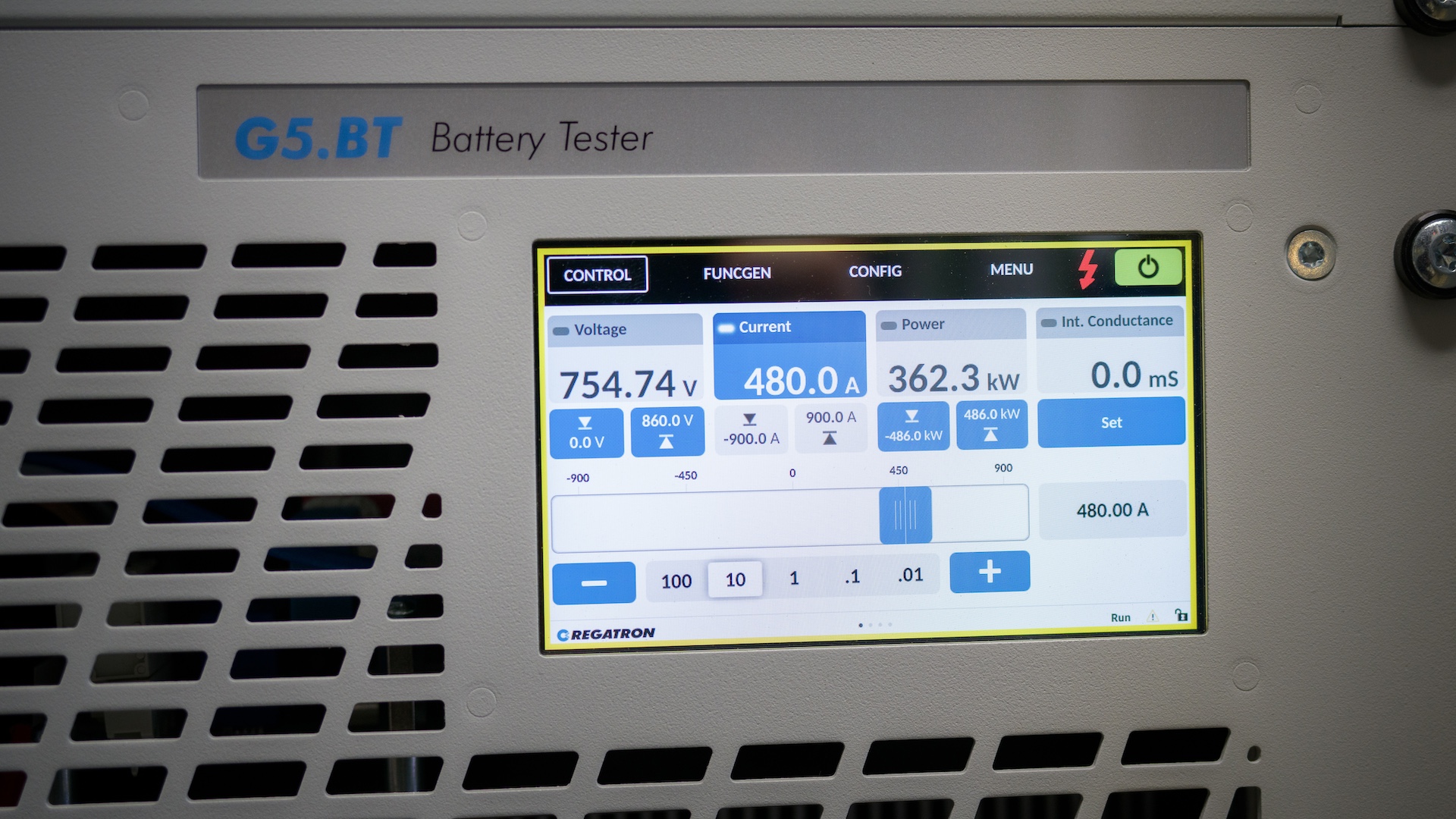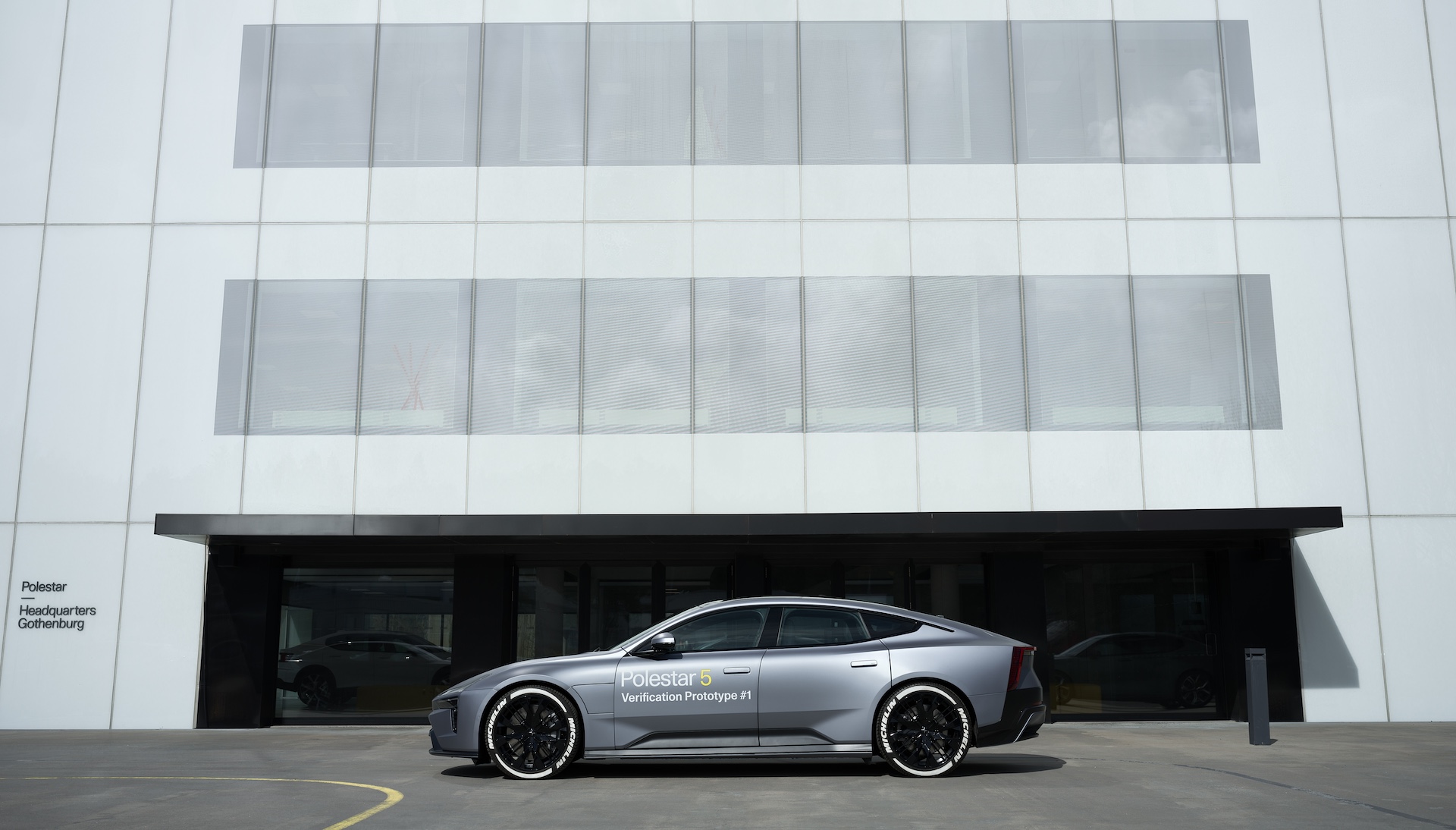The Polestar 5 could be the first EV with smartphone-like fast charging speeds
Prototype charges from ten to 80 per cent in just ten minutes

Polestar has revealed that a prototype version of its upcoming Polestar 5 model has managed to achieve a 10-to-80 per cent battery charge in just ten minutes, making it among the fastest charging electric vehicles outside of a laboratory.
Teaming up with battery experts StoreDot, Polestar has created what it refers to as extreme fast charging technology – or XFC for fans of abbreviation – that uses silicon-dominant cells to charge at blistering speeds without adverse effects on the battery health.
Currently, the fastest charging production cars on sale today, such as the Porsche Taycan, can manage a max charging speed of 320kW, but Polestar and StoreDot have managed to prove their concept can handle peak speeds of up to 370kW.
In the time it takes to nip to the toilet and order an oat milk flat white, Polestar’s shapely and luxurious electric saloon can be topped up to add the equivalent of 200 miles to a journey, which is starting to edge EV technology closer to the internal combustion engine in terms of convenience.

While super fast charging has been available on smartphones and other consumer technology for several years, where almost a full charge can be achieved in a matter of minutes, rather than hours, automotive manufacturers are still figuring out how to do this safely with much larger battery packs that require a huge amount of thermal management.
Polestar claims that one of the biggest achievements of its real-world prototype is that it demonstrated consistent charging speeds of 310kW, with peaks of 370kW. This is faster than almost all public charging outlets currently available in the world, with only ABB’s Terra 360 able to get close with its 360kW output.
Thomas Ingenlath, Polestar CEO, said: "With this new technology, on longer journeys when drivers do stop they’ll be able to spend less time charging and be back on the road faster than before. In fact, that stop time will be more akin to what they experience with a petrol car today".
Get daily insight, inspiration and deals in your inbox
Sign up for breaking news, reviews, opinion, top tech deals, and more.
Nice, if you can find an outlet

While Polestar CEO Thomas Ingenlath’s sentiment is true, the fast-charging technology is only as good as the infrastructure, which any EV owner will admit is currently still playing catch up.
Speaking as an EV owner living in the south of England, I can count on one hand the number of fast and reliable charging outlets at my disposal at any one time, and due to their scarcity, they tend to be occupied, broken or inaccessible because the petrol station is having a food delivery (I'm looking at you, BP Pulse).
Polestar's breakthrough is indeed cause for celebration, as this is the first time these kind of lofty charging speeds have been demonstrated on a fully drivable verification prototype, outside of lab conditions and with the sort of charging consistency and performance that makes it applicable to production vehicles.
But as we mentioned earlier, the number of Electric Super Hubs, as they are referred to by Gridserve, are still in relatively small numbers. For example, Gridserve has 12 Electric Super Hubs across its UK network, each delivering between six and 12 High Power 350-kW capable chargers at any one time.
A quick look at Zap-Map, which is a great resource for EV owners to locate and get the real-time status of chargers, reveals that vast swathes of mainland Europe and entire States in the US (according to the app PlugShare) lack chargers capable of delivering 350kW or more.
The Polestar 5 is tipped to go on sale in 2025 in some markets and cost in excess of $100,000 (around £130,000 / AU$190,000), which isn’t exactly affordable for the masses nor does it give those in control of public EV infrastructure much time to initiate a mass rollout of 370kW-capable chargers.
So unless you are lucky enough to have deep pockets and live near a super-fast charging station, you’ll still have to put up with those hour-long toilet breaks like every other EV owner.
You might also like

Leon has been navigating a world where automotive and tech collide for almost 20 years, reporting on everything from in-car entertainment to robotised manufacturing plants. Currently, EVs are the focus of his attentions, but give it a few years and it will be electric vertical take-off and landing craft. Outside of work hours, he can be found tinkering with distinctly analogue motorcycles, because electric motors are no replacement for an old Honda inline four.